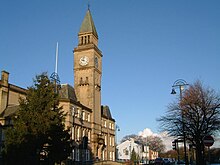To help me with designing a travel guide, I wanted to look at other designs that I feel fit with the style that I want to create mine in. I want to create something that is relatively simple, but also appears sophisticated and stylish.
Taken from Elle Uk.
Taken from Phaidon
The Wallpaper travel guides are incredibly sleek and contemporary, I own the one for Paris, and it is compact and concise in terms of the content of the book, and the design of the front cover is also simple. The books are all colour coordinated according to different cities, and there is a minimal amount of text used.
Taken from Louis Vuitton
Probably the most decadent travel guides you could get hold of, but I like the fact that whilst they are their own product range, they maintain the same style as the original Louis Vuitton bags, but they have also played around with the design so that it feels fresh and modern. The use of a simple block colour again means that they can be coordinated and defined in a simple manner, although I do think that some of the colours do feel a little garish, particularly the green against the brown background.
The illustration style also appeals to the fashionable crowd, as they are very pretty drawings. The simple sans serif typeface used also compliments the contemporary style.
Taken from Aisle One
It's always nice to have a bit of modernist inspiration, and I think these travel guides look interesting and cool, although a little dated now. The illustrations are simple but effective and manage to perfectly communicate the iconography of the cities in a witty and engaging manner.
















